Menus
- Dare to do more plastic
- Nine titles in the Supersport World Championship since 2002
- Technical Honda CBR 600 RR
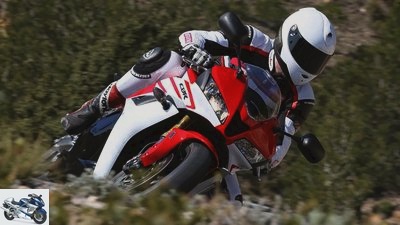
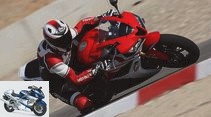
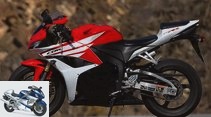
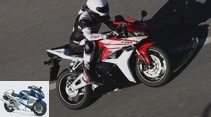
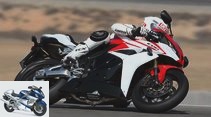
16 photos
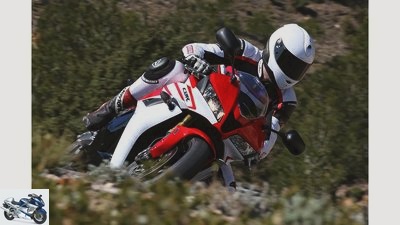
1/16
Honda CBR 600 RR.
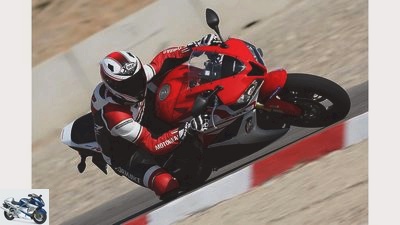
2/16
Honda CBR 600 RR.
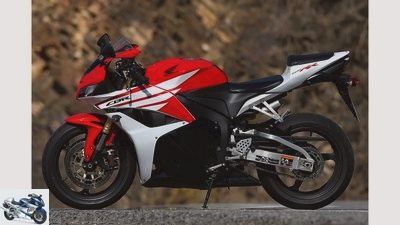
3/16
Honda CBR 600 RR.
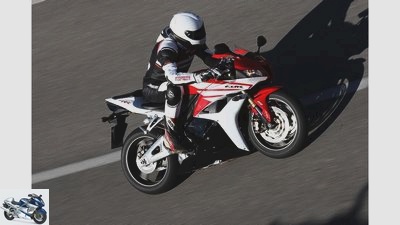
4/16
Honda CBR 600 RR.

5/16
Honda CBR 600 RR.
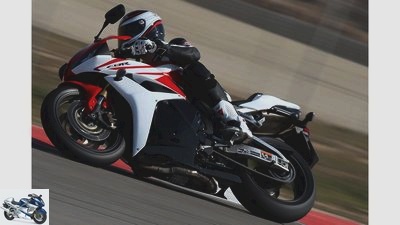
6/16
Honda CBR 600 RR.
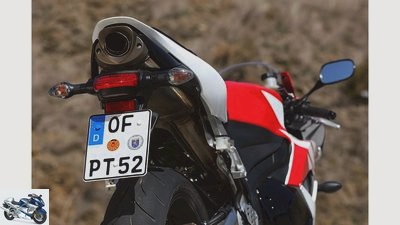
7/16
Honda CBR 600 RR.
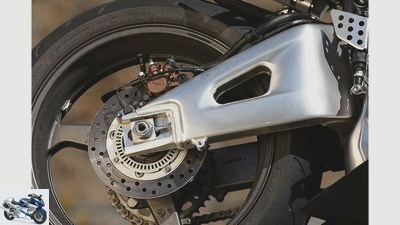
8/16
Honda CBR 600 RR.
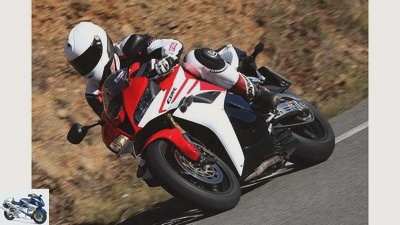
9/16
Honda CBR 600 RR.
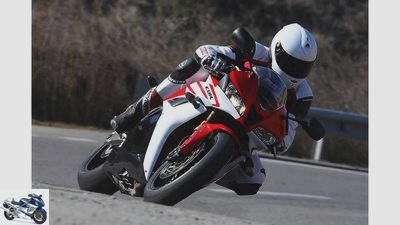
10/16
Honda CBR 600 RR.
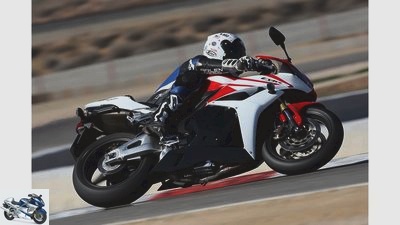
11/16
Honda CBR 600 RR.
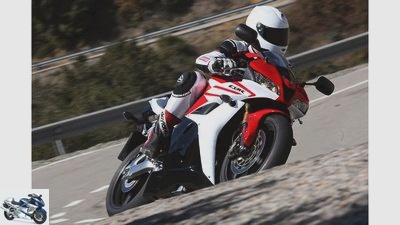
12/16
Honda CBR 600 RR.
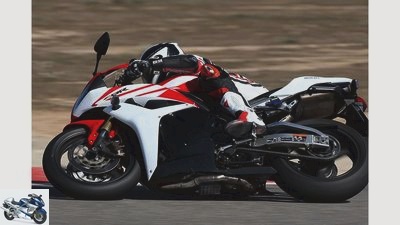
13/16
Honda CBR 600 RR.
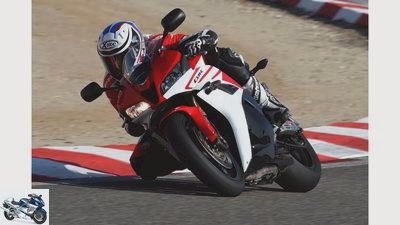
14/16
Honda CBR 600 RR.
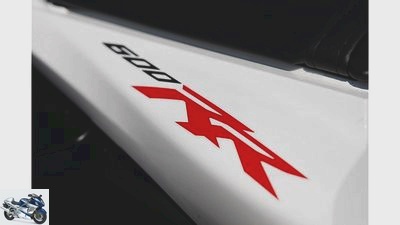
15/16
Honda CBR 600 RR.
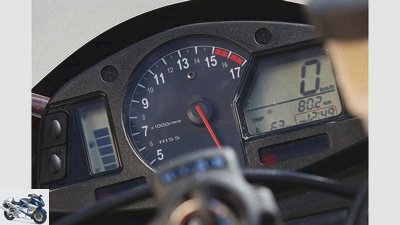
16/16
Honda CBR 600 RR.
Euro 3 classic: Honda CBR 600 RR
Dare to do more plastic
The Supersport class as we know it today would not have existed without the Honda CBR 600 RR. But their raison d’etre is slowly becoming fragile. Goodbye, yogurt cups.
The Honda C.BR 600 RR was in the public eye for the first time at IFMA in 1986, internal abbreviation PC 19. But nobody noticed. Their full disguise caused much more sensation. The engine and radiator couldn’t be seen, but there was plastic on all corners and edges, from front to back. The road to the nickname yoghurt cup was therefore not a long one. The prophecies of doom quickly fell silent, however, because the CBR 600 demonstrated class from the start. Compact engine with 85 hp, 17-inch tires, light but stable steel chassis and only 210 kilograms with a full tank. This guaranteed speed at the end of the 80s of the last millennium. To this day, Honda has not changed anything decisive about these basic characteristics.
In 1999, with the PC 35, the steel frame gave way to an aluminum corset, and in 2001 the injection replaced the carburettor. After that there were only marginal changes to the Honda CBR 600 RR until today. Sure, the chassis got better and better, the performance increased a little more and with the PC 40 the electrohydraulically controlled steering damper was introduced in 2007. ABS followed as standard in 2009. That was the main change for the PC 40, which is still in the Honda dealer’s showroom today.
Nine titles in the Supersport World Championship since 2002
With its balance, good chassis, fine brakes and sufficient engine power, the CBR 600 series blossomed from the spot to become the series test winner at MOTORRAD, and garnered plenty of sympathy. Sure, over the years the YZF-R6 from Yamaha or the Triumph Daytona 675 competed for place in the sun. But it was enough for the really big sporting successes until the end. Nine titles in the Supersport World Championship since 2002 are impressive. Michael van der Mark last triumphed in 2014 on the Honda CBR 600 RR.
And yet the Honda has to go now. The world’s largest motorcycle manufacturer sees no more potential in the fast 600, and sales have been falling for years. When the CBR 600 came on the market, the 900 and 1000 four-cylinder were all fat thick ships. Little weight was a power. Today the 1000 superbikes weigh just as much as the small 600s, but offer a hefty performance premium. The raison d’être then becomes fragile. Mainly because Honda has direct competition in its own stable with the CBR 650 F. Less high-tech, less super sports flair, less chassis and performance, but also 4000 euros cheaper. There is no more space for the Honda CBR 600 RR.
Technical Honda CBR 600 RR
markus-jahn.com
With its balance, good chassis, fine brakes and sufficient engine power, the CBR 600 series blossomed from the spot to become the series test winner at MOTORRAD.
engine:
- Water-cooled four-cylinder, four-stroke in-line engine, two overhead, chain-driven camshafts, four valves per cylinder, bucket tappets, wet sump lubrication, injection, 4 x Ø 40 mm, regulated catalytic converter, 343 W alternator, 12 V / 9 Ah battery, mechanically operated multi-disc oil bath clutch, Six-speed gearbox, O-ring chain, secondary ratio 2.563.
- Bore x stroke: 67.0 x 42.5 mm
- Displacement: 599 cm³
- Compression ratio: 12.2: 1
- Rated output: 88.1 kW (120 hp) at 13,500 rpm
- Max. Torque: 66 Nm at 11,250 rpm
landing gear:
- Bridge frame made of aluminum, upside-down fork, Ø 41 mm, electro-hydraulic steering damper, adjustable spring base, rebound and compression damping, two-arm swing arm made of aluminum, central spring strut with lever system, adjustable spring base, rebound and compression damping, double disc brake at the front, Ø 310 mm, four-piston Fixed calipers, rear disc brake, Ø 220 mm, single-piston floating caliper, ABS.
- Cast aluminum wheels: 3.50 x 17; 5.50 x 17
- Tires: 120/70 ZR 17; 180/55 ZR 17
Dimensions + weights:
- Wheelbase 1375 mm, steering head angle 66.5 degrees, caster 98 mm, front / rear suspension travel 120/135 mm, seat height * 820 mm, weight with a full tank * 198 kg, load 176 kg, tank capacity / reserve 18.0 / 3.5 liters.
- Guarantee: two years
- Service intervals: 6000 km
- Price: 12,505 euros
- Additional costs: 285 euros
Related articles
-
Cruiser comparison test: Honda VTX 1300 S, Kawasaki VN 1600 Classic
Cruiser comparison test: Honda VTX 1300 S, Kawasaki VN 1600 Classic Damn long hard Handy six-centimeter chunks, wheelbases begging in the parking bay,…
-
Zonko’s attack on the Honda CB 1000 R
andreasriedmann.at 14 pictures andreasriedmann.at 1/14 Honda CB 1000 R. andreasriedmann.at 2/14 In the lower and middle speed range, the quad …
-
Technology highlights: Bimota Tesi, Honda NR 750, Norton TT
Jahn Technology highlights: Bimota Tesi, Honda NR 750, Norton TT Techno motorcycle The pace of further development in two-wheelers is getting faster and…
-
Euro 3 classic: Yamaha XJR 1300
factstudio.de 13 pictures factstudio.de 1/13 Yamaha XJR 1300. factstudio.de 2/13 Yamaha XJR 1300. factstudio.de 3/13 Yamaha XJR 1300. factstudio.de 4/13 …
-
Euro 3 classic: Aprilia SL 750 Shiver
14th photos 1/14 Aprilia SL 750 Shiver. 2/14 Aprilia SL 750 Shiver. 3/14 Aprilia SL 750 Shiver….
-
Comparison test Honda VT 750 C2-Kawasaki VN 800 Classic
Comparison test Honda VT 750 C2 / Kawasaki VN 800 Classic End of the line longing Or how you can also get your kicks in Stuttgart-Bad Cannstatt. Caught….
-
Euro 3 classic: Suzuki Intruder M 1800 R
17 pictures 1/17 Suzuki Intruder M 1800 R. 2/17 Suzuki Intruder M 1800 R ….
-
fact 17th photos fact 1/17 Honda CR 450 Classic Racer. fact 2/17 Honda CR 450 Classic Racer. fact 3/17 Less for the racetrack, more for the eye: the CR…
-
Generation comparison Honda CBR 600 F
Jahn Generation comparison Honda CBR 600 F Ten Years After After years of arms race in the 600 class, Honda is shifting down a gear with the CBR 600 F….
-
Euro 3 classic: Harley-Davidson V-Rod
markus-jahn.com 19th photos markus-jahn.com 1/19 Harley-Davidson V-Rod. markus-jahn.com 2/19 Harley-Davidson V-Rod. markus-jahn.com 3/19 Harley-Davidson…